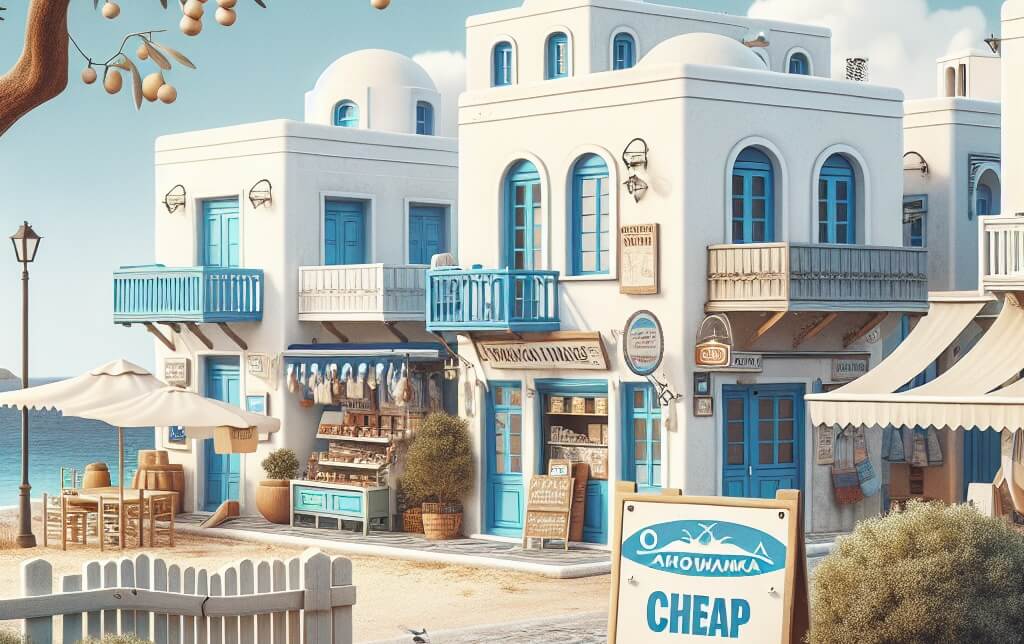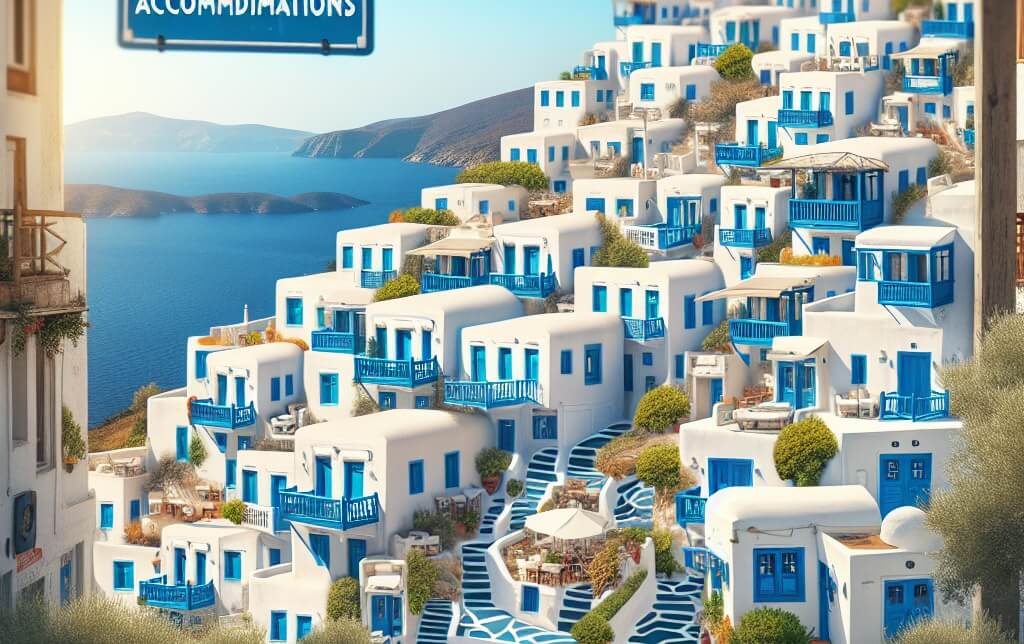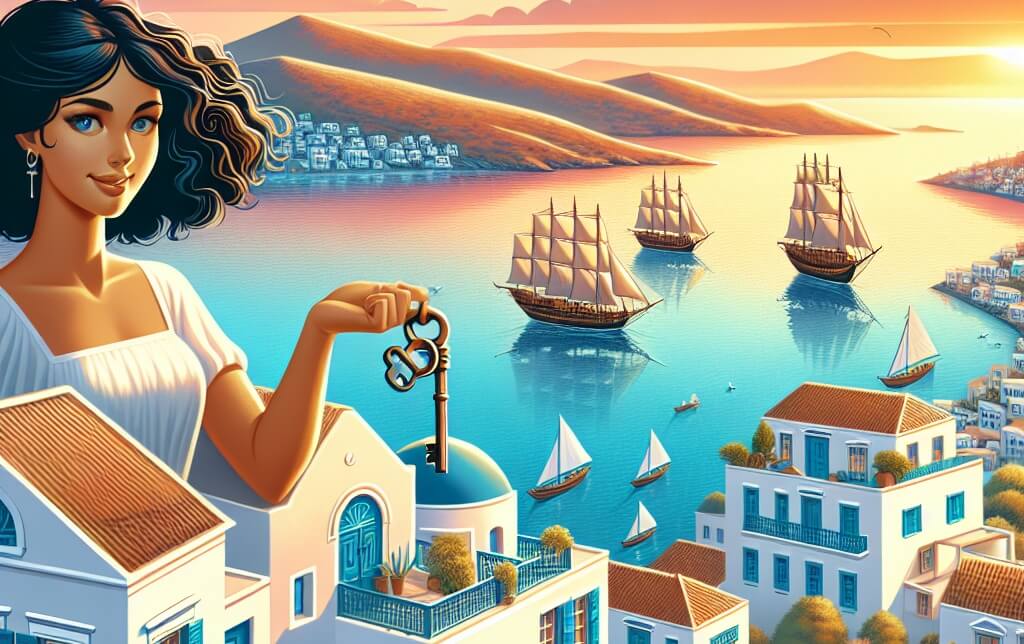
Discover Mytilini, Greece: A Stunning Island Escape
Discover Mytilini, Greece, a captivating island escape that boasts stunning landscapes, rich history, and warm hospitality. Located in the Aegean Sea, Mytilini is the capital of the island of Lesbos and offers visitors a unique blend of culture and natural beauty. From the picturesque beaches with crystal-clear waters to the charming villages with traditional architecture, Mytilini is a destination that appeals to all types of travelers. Explore the ancient ruins, sample delicious Greek cuisine, and immerse yourself in the vibrant local culture. Whether you seek relaxation or adventure, Mytilini promises an unforgettable experience that will leave you in awe of its beauty and charm.
I. Introduction
I. Introduction Located on the island of Lesvos in the Aegean Sea, Mytilini is the capital and largest city of Greece. Known for its rich history, picturesque landscapes, and vibrant culture, Mytilini is a popular destination for tourists seeking to explore the beauty of the Greek islands. With its charming harbor, ancient architecture, and warm Mediterranean climate, Mytilini offers visitors a unique blend of tradition and modernity. In this essay, we will delve into the history, attractions, and significance of Mytilini, shedding light on what makes this city a hidden gem in the heart of Greece.
II. Historical Significance
The historical significance of Mytilini, Greece, lies in its rich and diverse past that spans thousands of years. As the capital of the island of Lesbos, Mytilini has been a strategic hub for trade, culture, and politics in the Aegean region. The city has witnessed the rise and fall of various civilizations, including the Ancient Greeks, Romans, Byzantines, and Ottomans, each leaving their mark on its architecture, traditions, and way of life. Mytilini is also renowned for its contributions to literature and philosophy, being the birthplace of the famous poet Sappho and the philosopher Theophrastus. Furthermore, the city played a significant role in the refugee crisis of the 21st century, serving as a gateway for thousands of migrants seeking asylum in Europe. Overall, Mytilini's historical significance is a testament to its enduring cultural heritage and its enduring resilience in the face of adversity.
III. Geographical Features
The island of Mytilini, located in Greece, boasts a diverse range of geographical features that contribute to its unique charm and natural beauty. From its rugged coastline dotted with pristine beaches to its lush green hills and valleys, Mytilini offers a picturesque landscape that attracts visitors from around the world. The island's volcanic origins are evident in its rocky cliffs and dramatic rock formations, providing a stunning backdrop for outdoor activities such as hiking and rock climbing. Additionally, the fertile plains of Mytilini support a thriving agricultural industry, with olive groves and vineyards covering much of the island's interior. Overall, the geographical features of Mytilini blend seamlessly to create a captivating and enchanting destination for travelers seeking to immerse themselves in the beauty of the Greek landscape.
IV. Cultural Heritage
IV. Cultural Heritage in Mytilini, Greece is rich and diverse, reflecting the island's long and storied history. From ancient archaeological sites such as the Roman Aqueduct and the Castle of Mytilene to the traditional villages scattered throughout the island, Mytilini encapsulates a blend of influences from various civilizations that have inhabited the region over the centuries. The local cuisine, with its emphasis on fresh seafood and Mediterranean flavors, is a testament to the island's culinary heritage. Furthermore, the vibrant arts and music scene in Mytilini showcases the creativity and talent of its residents, adding to the cultural tapestry of the island. Overall, the cultural heritage of Mytilini is a source of pride for its inhabitants and a draw for visitors seeking to immerse themselves in the rich history and traditions of this enchanting Greek island.
V. Natural Resources
Mytilini, Greece, benefits from a diverse range of natural resources that contribute to its economic and environmental well-being. The island is rich in fertile agricultural land, producing a variety of crops such as olives, grapes, and citrus fruits. The surrounding waters provide abundant fish stocks, supporting the local fishing industry. Additionally, Mytilini is known for its natural mineral springs, which attract tourists seeking therapeutic treatments. These natural resources not only sustain the local economy but also enhance the quality of life for residents and visitors alike. Efforts to sustainably manage and protect these resources are essential to ensure their continued availability for future generations.
VI. Landmarks and Attractions
In Mytilini, Greece, a plethora of captivating landmarks and attractions await visitors to explore. One notable landmark is the imposing Mytilene Castle, which dates back to the Byzantine era and offers panoramic views of the town and the Aegean Sea. The Archaeological Museum of Mytilini is another must-visit site, showcasing a rich collection of artifacts that shed light on the island's ancient history. For nature enthusiasts, the Petrified Forest of Lesvos is a unique attraction, where visitors can witness fossilized tree trunks dating back millions of years. Additionally, the picturesque town of Molyvos with its charming cobblestone streets and traditional architecture is a delightful destination for a leisurely stroll. Overall, Mytilini offers a diverse array of landmarks and attractions that cater to a wide range of interests, making it a compelling destination for travelers seeking cultural enrichment and natural beauty.
VII. Religious Sites
In Mytilini, Greece, there are several significant religious sites that hold cultural and historical importance. The island is home to various churches, monasteries, and mosques that serve as places of worship and pilgrimage for the local population and visitors alike. One notable religious site is the Church of Agios Therapon, known for its Byzantine architecture and religious artifacts. Additionally, the Yeni Mosque, a symbol of the island's diverse religious heritage, stands as a testament to the Ottoman influence in the region. These religious sites not only offer spiritual nourishment but also provide insight into the rich tapestry of religious traditions that have shaped the identity of Mytilini over the centuries.
VIII. Lesvos Island
Lesvos Island, also known as Mytilini, is a captivating destination in Greece that boasts a rich historical and cultural heritage. VIII. Lesvos Island holds a significant place in the country's history, with its picturesque landscapes and charming villages attracting visitors from all over the world. The island is renowned for its stunning beaches, traditional cuisine, and warm hospitality of its residents. Exploring Lesvos Island offers a unique opportunity to immerse oneself in the authentic Greek way of life, from wandering through ancient ruins to savoring local delicacies. Overall, Lesvos Island is a must-visit destination for those seeking a blend of history, natural beauty, and genuine Greek charm.
IX. Conclusion
In conclusion, the city of Mytilini, Greece, presents a captivating blend of historical significance, natural beauty, and cultural richness. From its ancient landmarks to its picturesque coastline, Mytilini offers visitors a unique opportunity to immerse themselves in the rich tapestry of Greek heritage. The city's vibrant atmosphere, warm hospitality, and diverse culinary scene make it a must-visit destination for travelers seeking an authentic Greek experience. Overall, Mytilini stands as a testament to the enduring allure of this enchanting island, drawing visitors from around the world to explore its wonders and create lasting memories.









